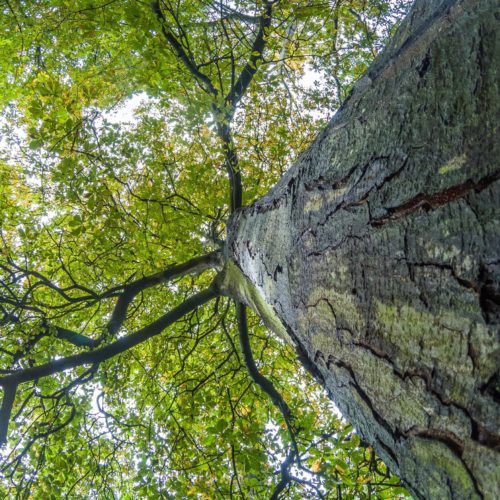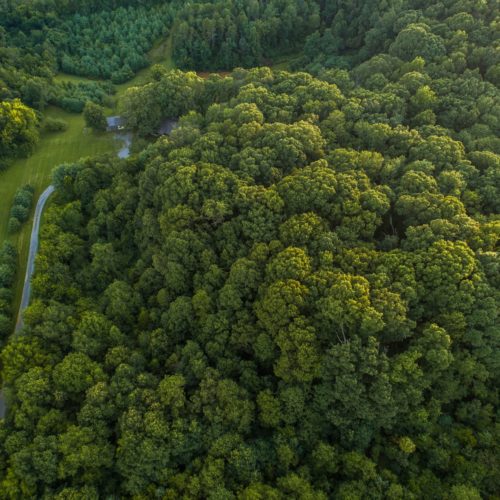Biodiversity Net Gain has been used for many years by various local planning authorities, utility providers, housing developers and other organisations to demonstrate how developments achieve positive biodiversity outcomes.
However, it will soon become an integral part of planning consent due to legislation changes proposed in the new Environment Bill. These changes include a mandatory Biodiversity Net Gain of 10% for most new developments.
What is Biodiversity Net Gain?
Biodiversity Net Gain refers to an intervention which results in the net improvement to biodiversity for a defined area of land. An intervention is defined as a human-induced impact which results in a change to the type or condition of a habitat. Developing land or changing the way it is managed, are both examples of interventions.
What is a Biodiversity Net Gain Assessment?
A Biodiversity Net Gain Assessment compares baseline conditions to post-development plans. Biodiversity Net Gain is achieved if the post-development plans provide a net improvement to the biodiversity of a site.
The following steps are used to calculate biodiversity net gain or loss
- A field survey is undertaken to collect pre-development habitat data.
- Post-development habitat data is defined using the landscaping plans.
- Pre-development habitat data and post-development habitat data is converted into ‘biodiversity units’ using a biodiversity metric. Additional biodiversity units may be added to post-development data using offsite compensation or biodiversity credits.
- The Biodiversity Net Gain or Loss is calculated using the difference between the pre-development and post development habitat data. It is often presented as a percentage.
What metrics are available for calculating Biodiversity Net Gain?
There are many metrics which have been developed for calculating Biodiversity Net Gain. The Defra Biodiversity Metric has been a common metric in the UK. However, it’s recently been updated and replaced by the Natural England ‘Natural England Metric 3.0 (or The Small Sites Metric, where applicable).’ The update is intended to improve the metric through changes such as an extended range of habitat types and consideration of ecological connectivity. It also includes a spreadsheet-based calculator, which improves the ease with which Biodiversity Net Gain calculations are made.
Several organisations and local planning authorities have also devised their own biodiversity metrics. For this reason, it is important to consult with the local planning authority when deciding which metric is most appropriate for your development.
What are the requirements for Biodiversity Net Gain?
The National Planning Policy Framework (NPPF) places a responsibility on local planning authorities to encourage net gains for biodiversity to be sought through planning policies and decisions. This allows the local planning authority to determine how Biodiversity Net Gain is assessed and enforced within their jurisdiction.
How significant are the changes proposed in the new Environment Bill?
All planning permission will be subject to a condition that the development may not begin unless the local planning authority approves a biodiversity plan. The planning authority can only approve the plan if they are confident of its accuracy and that any offsite biodiversity gain or credits are already allocated or purchased. Furthermore, the gain must be at least 10%.
Does my development require a Biodiversity Net Gain Assessment?
If you have a development proposal that requires planning permission it is likely that Biodiversity Net Gain requirements within the new Environment Bill will have an impact on your project and expert advice will be essential to ensure an efficient process and outcome for your development.
Our expertise and experience
We have a wealth of knowledge when it comes to undertaking Biodiversity Net Gain calculations, including experience with different metrics. Our staff are trained in Biodiversity Net Gain Assessments, which means they have the expertise to find pragmatic solutions.
We also have an award-winning Geospatial team who provide accurate and rapid Biodiversity Net Gain calculations from the baseline survey and post-development plans.
We use data collected during the habitat survey for the Preliminary Ecological Assessment (PEA) to inform the baseline data, which saves time and minimises costs.
Projects for which our expert team of ecologists have carried out Biodiversity Net Gain Assessments
- In Oxfordshire Thomson used a commercial Biodiversity Impact Calculator to assess Biodiversity Net Gain on a residential development of 100 homes.
- In South Cambridgeshire, Thomson used the Cambridge and Peterborough Habitat Impact Calculator to assess Biodiversity Net Gain for a residential development of 3,500 homes.
- In Welbourne Garden Village in Hampshire, we used the Defra Biodiversity Metric and the new Natural England Biodiversity Metric 2.0 to assess Biodiversity Net Gain on 6,000 homes for Buckland Developments.
Contact us today to discuss your Biodiversity Net Gain requirements















